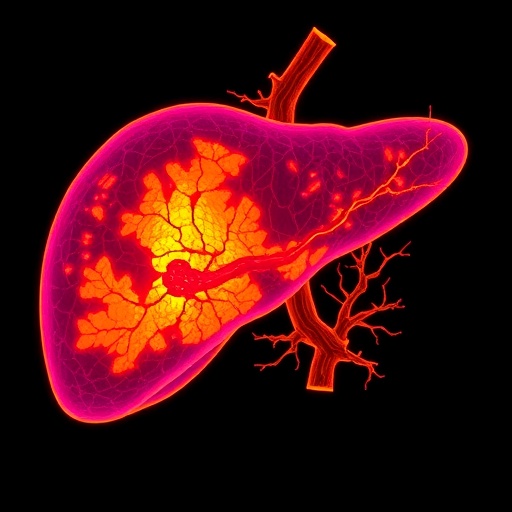
Bladder cancer (BLCA) remains one of the most challenging malignancies within the urinary system, characterized by high rates of recurrence, metastasis, and resistance to current therapeutic interventions. This malignancy demands a detailed understanding of its molecular underpinnings to develop targeted therapies that can more effectively curtail disease progression and improve patient survival. Recent groundbreaking research has unveiled the pivotal role of menin, the protein product of the MEN1 gene, in driving bladder cancer progression through intricate molecular signaling pathways.
Menin has long been a subject of intense scrutiny due to its diverse functions in various cancers such as leukemia, breast, prostate, and liver cancers. Despite extensive investigations, its implication in bladder cancer was previously obscure. The new study, conducted collaboratively by leading researchers across several prominent institutions including Harbin Medical University and Shanghai Jiaotong University School of Medicine, sheds light on this gap by demonstrating menin’s oncogenic properties in BLCA.
Initial analyses involving mRNA and protein expression profiles of bladder cancer patient tissues revealed that MEN1 is significantly upregulated in tumor samples compared to healthy controls. These elevated levels correlate closely with clinical parameters indicative of aggressive disease – notably advanced tumor stage, presence of lymph node metastasis, and increased patient age. Moreover, high MEN1 expression portends poor overall survival, underlining its clinical relevance as a potential prognostic biomarker.
Functional studies employing RNA interference to knock down MEN1 expression in bladder cancer cell lines yielded compelling evidence of menin’s role in tumorigenesis. MEN1 depletion led to marked inhibition of cell proliferation and induced a pronounced G1/S phase arrest in the cell cycle, signifying that menin facilitates cell cycle progression and cell division in BLCA cells. Supporting this, xenograft experiments in nude mice demonstrated a significant reduction in tumor volume upon MEN1 silencing, confirming menin’s tumor-promoting capacity in vivo.
To elucidate the molecular mechanisms underpinning menin’s oncogenic activity, the research team performed RNA sequencing coupled with KEGG pathway enrichment analysis. The results revealed that MEN1 knockdown induces profound alterations in gene expression across multiple biological pathways, including key regulators of the Wnt signaling cascade, autophagy, mitophagy, nucleotide excision repair, and apoptosis. These widespread transcriptional changes emphasize menin’s integral role in orchestrating diverse cellular processes central to cancer cell survival and proliferation.
Strikingly, the study found that menin modulates the Wnt/β-catenin signaling pathway, a canonical pathway often dysregulated in cancer. MEN1 knockdown significantly reduced β-catenin (encoded by CTNNB1) expression at both the mRNA and protein levels. Mechanistic assays revealed that menin directly binds to the proximal promoter region of CTNNB1, thereby activating its transcription and sustaining β-catenin signaling within BLCA cells. This novel insight into menin’s regulatory control over β-catenin highlights a critical axis driving bladder tumorigenesis.
Delving deeper, the researchers identified another transcription factor, TFAP2C, as a direct target of menin. Menin binds to the proximal promoter of TFAP2C in a manner mediated by the Mixed Lineage Leukemia (MLL) complex, leading to upregulation of TFAP2C expression. Intriguingly, subsequent experiments demonstrated that TFAP2C itself binds to the CTNNB1 promoter and is indispensable for the menin-dependent activation of the Wnt/β-catenin pathway. The data collectively articulate a sophisticated regulatory cascade whereby menin enhances TFAP2C expression, which in turn drives β-catenin transcription, reinforcing malignant cell proliferation.
This comprehensive characterization of the menin/TFAP2C/β-catenin signaling axis underscores a potential therapeutic vulnerability in bladder cancer. In light of this, the study evaluated BAY-15522, a small molecule inhibitor specifically targeting menin. Treatment with BAY-15522 effectively suppressed the proliferation of BLCA cells and curtailed tumor growth in preclinical models by disrupting the menin-mediated signaling network. These findings not only confirm menin’s oncogenic role but also position menin inhibitors as promising candidates for clinical intervention in BLCA management.
The implications of this research extend beyond bladder cancer, offering a conceptual framework for targeting menin and its downstream pathways in other malignancies where menin is aberrantly expressed. The ability of menin to regulate transcription factors and oncogenic signaling pathways highlights its multifunctional role as a master regulator of cancer cell biology. Therapeutically, targeting such central nodes could yield more durable and widespread anti-cancer effects.
Moreover, the observed positive correlation between MEN1 expression and tumor stage, patient age, and lymph node involvement suggests that menin could serve as a useful prognostic marker to stratify patient risk and personalize treatment approaches. Measuring MEN1 levels in clinical settings might help identify individuals who would benefit most from menin-targeted therapies, aligning with precision medicine goals.
This study also paves the way for future research to explore the broader interactome of menin in bladder cancer cells, investigating other potential co-factors and signaling pathways that may contribute to tumor progression and resistance mechanisms. The integration of epigenetic regulators, DNA repair machineries, and apoptosis pathways within menin’s influence opens many avenues for combinatorial therapeutic strategies.
In summary, this transformative research provides compelling evidence that menin acts as a critical oncogene in bladder cancer by orchestrating a regulatory axis involving TFAP2C and β-catenin, thus enhancing cell proliferation and tumor growth. Pharmacological inhibition of this axis impairs BLCA progression, spotlighting menin as an attractive molecular target for innovative therapeutics. As bladder cancer continues to pose clinical challenges worldwide, these insights offer renewed hope for developing more effective and targeted treatment modalities.
Subject of Research: The oncogenic role of menin (MEN1 gene product) in bladder cancer progression and its underlying molecular mechanisms.
Article Title: Menin facilitates the cell proliferation of bladder cancer via modulating the TFAP2C/β-catenin axis
Web References:
GSEA software: https://www.gsea-msigdb.org/gsea/index.jsp
Genes & Diseases Journal on ScienceDirect: https://www.sciencedirect.com/journal/genes-and-diseases
DOI Link: http://dx.doi.org/10.1016/j.gendis.2025.101565
References:
Shi Q., Pan X., Zhang S., Wu M., Xu M., Li Y-Q., Zhong L., Wang Z-Q., Xu W., Luo Y. (2025). Menin facilitates the cell proliferation of bladder cancer via modulating the TFAP2C/β-catenin axis. Genes & Diseases. DOI: 10.1016/j.gendis.2025.101565.
Image Credits: Qing Shi, Xiang Pan, Shiheng Zhang, Mengyuan Wu, Meiqi Xu, Yun-Qi Li, Li Zhong, Zi-Qi Wang, Wanhai Xu, Yakun Luo
Keywords: Cell proliferation, Cancer, Bladder cancer, MEN1, Menin, TFAP2C, β-catenin, Wnt signaling, Cell cycle, RNA interference, Xenograft model, Molecular oncology
Tags: advanced bladder cancer indicatorsbladder cancer metastasis and recurrencebladder cancer researchcancer progression and survival ratesclinical implications of MEN1 in bladder cancerMEN1 gene in cancermenin as therapeutic targetmolecular signaling pathways in cancermultidisciplinary cancer research collaborationsoncogenic properties of meninprotein expression profiles in cancertargeted therapies for bladder cancer




